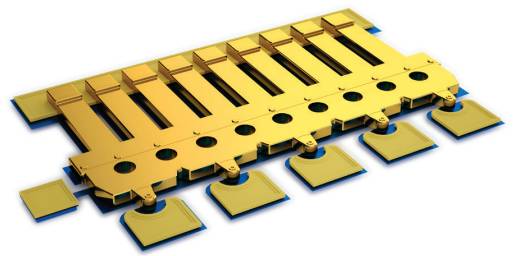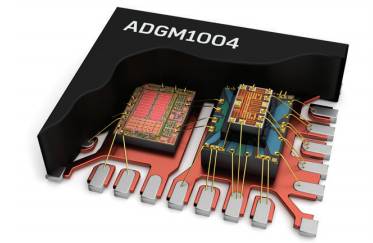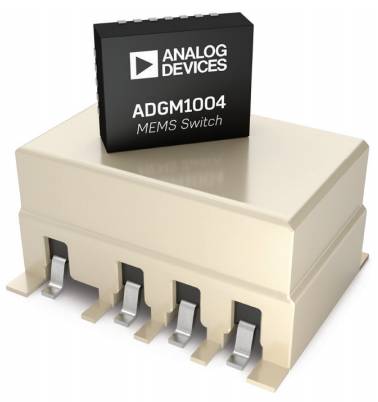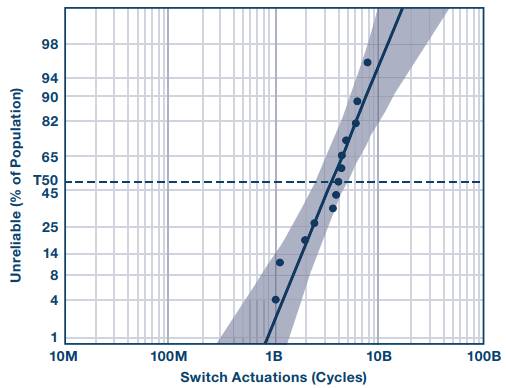Solving complex challenges demands innovative technology. Electromechanical relays have been around since the early days of the telegraph, but no alternative switching solutions have fully met the diverse needs of today’s markets—especially in test and measurement, communications, defense, healthcare, and consumer electronics. These industries require high-performance, reliable, and compact switching solutions that can handle both high-frequency RF signals and low-frequency DC applications.
As an example, test and measurement users are pushing for the smallest possible standard test solutions with high parallel testing capabilities across a wide frequency range—from 0 Hz/DC to hundreds of GHz. Traditional electromechanical relays struggle with narrow bandwidth, limited lifespan, and large form factors, making them increasingly unsuitable for modern system designs.
Microelectromechanical systems (MEMS) switches offer a breakthrough by replacing traditional relays and enabling next-generation performance. Analog Devices has leveraged advanced MEMS manufacturing techniques to mass-produce high-performance, fast, small-sized MEMS switches that provide mechanical durability, low power consumption, and electrostatic discharge (ESD) protection.
**MEMS Switch Technology**
The core of ADI’s MEMS switching technology lies in electrostatically driven micromachined gold cantilever beam components. Essentially, these switches function as micro-scale mechanical relays, using metal-to-metal contacts activated by high-voltage DC static electricity.
Figure 1 shows a close-up view of a single MEMS switch cantilever, featuring five parallel contacts and a hinge structure. This design is used in the ADGM1304 SP4T MEMS switch and the ADGM1004 SP4T switch with enhanced ESD protection.

To support the operation of these switches, ADI has developed a companion driver IC that generates the necessary high DC voltage, ensuring fast, reliable performance and long life. The driver IC is packaged in an ultra-small SMD QFN package, consuming only 10 mW—ten times less than typical RF relay drivers.

**Integrated ESD Protection**
The ADGM1004 MEMS switch integrates solid-state ESD protection to enhance RF port performance. Its Human Body Model (HBM) ESD rating reaches 5 kV, setting a new industry benchmark. This proprietary technology ensures robust ESD protection without compromising RF performance.

ADI combines three proprietary lithography technologies with advanced assembly and MEMS capping techniques to achieve this level of performance.
**RF and 0 Hz/DC Performance**
One of the key advantages of MEMS switches is their ability to deliver precise 0 Hz/DC performance alongside wideband RF capabilities in a compact surface-mount package.
Figure 4 illustrates the insertion loss and isolation performance of the ADGM1004 SP4T MEMS switch. At 2.5 GHz, the insertion loss is just 0.45 dB, and it remains below –3 dB up to 13 GHz. The switch handles up to 32 dBm of RF power without compression and maintains a third-order intercept point (IP3) of 67 dBm over the entire frequency range.

Table 1 outlines critical accuracy specifications, including an impressive 5 kV HBM ESD rating, which significantly improves handling in ESD-sensitive environments.


**Compact Design for All Markets**
Regardless of the application, small size is a crucial requirement. Figure 5 compares the ADGM1004 SP4T MEMS switch with a typical DPDT electromechanical relay, showing a reduction in size by up to 95%.

Finally, ADI tested the thermal switching life of the ADGM1004 under RF power transfer conditions. As shown in Figure 6, the average number of cycles before failure was 3.4 billion at 2 GHz and 10 dBm.

The enhanced ESD protection of the ADGM1004 dramatically improves usability while maintaining excellent performance in both RF and DC applications. ADI’s MEMS switching technology offers world-class bandwidth performance starting from 0 Hz/DC. Compared to RF relays, MEMS switches are up to 95% smaller, 10 times more reliable, 30 times faster, and 10 times more energy-efficient. The ADGM1004 MEMS switch adds significant value to ADI’s already strong portfolio of switching solutions.
3.96Mm Ribbon Connector,Single Row Connector,Pc Board Connector,Pc Board Power Connector
YUEQING WEIMAI ELECTRONICS CO.,LTD , https://www.wmconnector.com